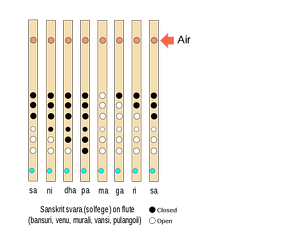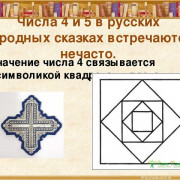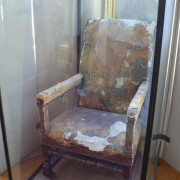Бансури
Содержание:
Саундтреки
Из фильма В центре вниманияИз фильма Ван ХельсингИз сериала Дневники ВампираИз фильма Скауты против зомбииз фильмов ‘Миссия невыполнима’Из фильма Голодные игры: Сойка-пересмешница. Часть 2OST ‘Свет в океане’OST «Большой и добрый великан»из фильма ‘Новогодний корпоратив’из фильма ‘Список Шиндлера’ OST ‘Перевозчик’Из фильма Книга джунглейиз сериала ‘Метод’Из фильма ТелохранительИз сериала Изменыиз фильма Мистериум. Тьма в бутылкеиз фильма ‘Пассажиры’из фильма ТишинаИз сериала Кухня. 6 сезониз фильма ‘Расплата’ Из фильма Человек-муравейиз фильма ПриглашениеИз фильма Бегущий в лабиринте 2из фильма ‘Молот’из фильма ‘Инкарнация’Из фильма Савва. Сердце воинаИз сериала Легко ли быть молодымиз сериала ‘Ольга’Из сериала Хроники ШаннарыИз фильма Самый лучший деньИз фильма Соседи. На тропе войныМузыка из сериала «Остров»Из фильма ЙоганутыеИз фильма ПреступникИз сериала СверхестественноеИз сериала Сладкая жизньИз фильма Голограмма для короляИз фильма Первый мститель: ПротивостояниеИз фильма КостиИз фильма Любовь не по размеруOST ‘Глубоководный горизонт’Из фильма Перепискаиз фильма ‘Призрачная красота’Место встречи изменить нельзяOST «Гений»из фильма ‘Красотка’Из фильма Алиса в ЗазеркальеИз фильма 1+1 (Неприкасаемые)Из фильма До встречи с тобойиз фильма ‘Скрытые фигуры’из фильма Призывиз сериала ‘Мир Дикого Запада’из игр серии ‘Bioshock’ Музыка из аниме «Темный дворецкий»из фильма ‘Американская пастораль’Из фильма Тарзан. ЛегендаИз фильма Красавица и чудовище ‘Искусственный интеллект. Доступ неограничен»Люди в черном 3’из фильма ‘Планетариум’Из фильма ПрогулкаИз сериала ЧужестранкаИз сериала Элементарноиз сериала ‘Обратная сторона Луны’Из фильма ВаркрафтИз фильма Громче, чем бомбыиз мультфильма ‘Зверопой’Из фильма БруклинИз фильма Игра на понижениеИз фильма Зачарованнаяиз фильма РазрушениеOST «Полный расколбас»OST «Свободный штат Джонса»OST И гаснет светИз сериала СолдатыИз сериала Крыша мираИз фильма Неоновый демонИз фильма Москва никогда не спитИз фильма Джейн берет ружьеИз фильма Стражи галактикииз фильма ‘Sos, дед мороз или все сбудется’OST ‘Дом странных детей Мисс Перегрин’Из игры Contact WarsИз Фильма АмелиИз фильма Иллюзия обмана 2OST Ледниковый период 5: Столкновение неизбежноИз фильма Из тьмыИз фильма Колония Дигнидадиз фильма ‘Страна чудес’Музыка из сериала ‘Цвет черёмухи’Из фильма Образцовый самец 2из фильмов про Гарри Поттера Из фильма Дивергент, глава 3: За стеной из мультфильма ‘Монстр в Париже’из мультфильма ‘Аисты’Из фильма КоробкаИз фильма СомнияИз сериала Ходячие мертвецыИз фильма ВыборИз сериала Королек — птичка певчаяДень независимости 2: ВозрождениеИз сериала Великолепный векиз фильма ‘Полтора шпиона’из фильма Светская жизньИз сериала Острые козырьки
History
According to Ardal Powell, flute is a simple instrument found in numerous ancient cultures. According to legends the three birthplaces of flutes are Egypt, Greece, and India. Of these, the transverse flute (side blown) appeared only in ancient India, while the fipple flutes are found in all three. It is likely, states Powell, that the modern Indian bansuri has not changed much since the early medieval era. However, a flute of a somewhat different design is evidenced in ancient China (dizi) which Powell, quoting Curt Sachs’ The History of Musical Instruments, suggests may not have originated in China but evolved from a more ancient Central Asian flute design. It is, however, not clear whether there was any connection between the Indian and Chinese varieties.
The early medieval Indian bansuri was, however, influential. Its size, style, bindings, mounts on ends and playing style in medieval Europe artworks has led scholars, such as Liane Ehlich, a flute scholar at the music school in the University of Lucerne, to state that the bansuri (venu) migrated from India into the Byzantium Empire by the 10th century and from there on to medieval Europe where it became popular.
All scales of Bansuris in a set
The flute is discussed as an important musical instrument in the Natya Shastra (~200 BCE to 200 CE), the classic Sanskrit text on music and performance arts. The flute (Venu or Vamsa) is mentioned in many Hindu texts on music and singing, as complementary to the human sound and Veena (vaani-veena-venu). The flute is however not called bansuri in the ancient, and is referred to by other names such as nadi, tunava in the Rigveda (1500–1200 BCE) and other Vedic texts of Hinduism, or as venu in post-Vedic texts. The flute is also mentioned in various Upanishads and Yoga texts.
According to Bruno Nettl, a music historian and ethnomusicologist, the ancient surviving sculptures and paintings in the temples and archaeological sites of India predominantly show transverse flutes being played horizontally (with a downward tilt). However, beginning in the 15th century, vertical end blowing style are commonly represented. This change in the relevance and style of bansuri is likely, states Nettl, because of the arrival of Islamic rule era on the Indian subcontinent and the West Asian influence on North Indian music.
Etymology and nomenclature
Musicians playing bansuri
The word bansuri originates in the bans (बाँस) + sur (सुर) .[citation needed]
A phonetically similar name for the same instrument, in early medieval texts, is the Sanskrit word vaṃśi which is derived from root vaṃśa (Sanskrit: वंश) meaning bamboo. A flute player in these medieval texts is called vamsika.
Other regional names of bansuri-style, six to eight play holes, bamboo flutes in India include bansi, eloo, kulal, kulalu, kukhl, lingbufeniam, murali, murli, nadi, nar, pawa, pullankuzhal, pillana grovi, pulangoil, vansi, vasdanda, sipung, and venuvu. Ancient regional innovations, such as those in the Himalayan foothills of India, developed more complex designs, such as the algoza which is a «twin bansuri» in different keys constructed as a single instrument, allowing the musician to play more complex music. In central and south India, a similar innovation is called nagoza or Template:Mattiyaan jodi, and Buddhist stupa reliefs in central India, from about the 1st century BCE, depict the single and twinned flute designs.
История
| Пример звучания |
| Бансури-бас (тональность Ми) |
| Помощь по воспроизведению |
| Пример звучания |
| Малый бансури (тональность Ми) |
| Помощь по воспроизведению |
Древний музыкальный инструмент, ассоциируемый с пастухами и их традициями, он тесно связан с историей Кришны и Радхи, а также запечатлён в произведениях буддийской живописи, созданных около 100 года н. э. Бансури под названием вену (veṇu IAST) почитается как божественный инструмент Кришны и часто ассоциируется с Раса-лилой; в мифологии упоминается, как мелодии, исполняемые Кришной на флейте, привлекали и очаровывали не только женщин, но и животных. Североиндийская бансури, обычно 14-ти дюймов в длину, традиционно использовалась также в качестве инструмента для аккомпанемента, например, в музыке к фильмам.
Пандит Панналал Гхош (1911—1960) смог превратить бансури из обычного народного инструмента в инструмент серьёзной классической музыки. Он экспериментировал с длиной, диаметром и количеством отверстий бансури и пришёл к выводу, что более длинные и широкие в диаметре бансури позволяют лучше использовать низкие октавы.
Игра на бансури
Игра на бансури
Бансури варьируются в длине от 12 дюймов (называются мурали) до 40 дюймов (шанкха-бансури). От длины и толщины бансури зависит и её настрой — чем она длиннее, тем более низкие звуки можно из неё извлечь. Тональность бансури определяется по суре Са — на бансури эта свара звучит при зажимании трёх ближних отверстий. Наиболее распространены 20-дюймовые модели. Для игры на бансури с шестью отверстиями используются указательные, средние и безымянные пальцы обеих рук. Если же число отверстий равно семи, то используется и мизинец одной из рук.
Традиционно в Индийской классической музыке игра на бансури сопровождается аккомпанементом из танпуры и табла.
Схема расположения нот (сур) на бансури
Звук в бансури, как и в прочих духовых инструментах, рождается колебаниями столбика воздуха внутри инструмента. Длина этого столбика варьируется в зависимости от закрывания или оставления открытыми различных отверстий бансури. Иногда отверстия закрываются лишь наполовину для создания бемольных или диезных нот. Существуют специальные приёмы по закрытию отверстий на инструменте. Наиболее популярны из них стили Панналала Гхоша (закрытие отверстий самыми кончиками пальцев) и Харипрасада Чаурасии (закрытие подушечками пальцев). Высота звука также определяются манипуляциями с мундштуком и передуванием (более сильным вдуванием воздуха). Важен и выбор позы для игры, так как часто надо играть несколько часов.
В число известных мастеров игры на бансури входят Панналал Гхош, Харипрасад Чаурасия, Виджай Рагхав Рао, Девендра Мурдешвар, Рагхунатх Сет и другие.
Изготовление
Изготовление бансури представляет собой целое искусство. Бамбук, годный для создания бансури, должен обладать сразу несколькими качествами: иметь тонкие стенки, быть прямым с единообразным круглым поперечным сечением и длинными междоузлиями. Так как трудно найти стебли бамбука, отвечающие всем этим требованиям, то хорошие бансури редки и дорогостоящи. Подходящие виды бамбука (например вида Pseudostachyum) свойственны лесам Ассама и Кералы.
После подбора подходящих образцов бамбук выдерживается, чтобы позволить природным смолам укрепить его древесину. Затем один конец бамбука затыкается пробкой, и прожигают отверстие для дутья. Отверстия для пальцев постепенно прожигаются раскалёнными прутьями, но не высверливаются, так как это может нарушить целостность ствола бамбука. Размещение отверстий для пальцев определяется измерением внутреннего и наружного диаметра ствола бамбука и дальнейшим использованием специальной формулы. После того как все отверстия готовы, бансури погружается в раствор антисептических масел, после чего очищается, высушивается и обвязывается шёлковыми или нейлоновыми шнурами одновременно в целях декорации и защиты от термического воздействия.
Construction
Bansuri is traditionally made from bamboo.
A bansuri is traditionally produced from a special type of bamboo, that naturally grows to long lengths between its nodes (knots). These grow abundantly in Himalayan foothills up to about 11,000 feet with high rainfall. These are particularly found in the northeastern (near Assam, Arunachal Pradesh, Meghalaya, Manipur, Mizoram, Nagaland, Sikkim, Tripura) and Western Ghats (near Kerala) states of India where numerous bamboo species grow with internodal lengths greater than 40 centimetres (16 in).
The harvested bamboo with a desired diameter is cut, dried and treated with natural oils and resins to strengthen it. Once ready, the artisans examine the smoothness and straightness and measure the dried hollow tube. They mark the exact positions for the holes, then use hot metal rod skewers of different diameters to burn in the holes. Drilling and other methods of hole making are avoided as it is believed they damage the fiber orientation and the splits affects the music quality. The burnt-in holes are then finished by sanding, one end plugged, the flute ringed at various positions to stabilize its form and shape over time and the unit tested for its musical performance. The distance of a finger-hole from the mouth-hole, and the diameter of the finger-hole controls the note it plays. Adjustments to the diameters of various holes is made by the artisans to achieve purity of the musical notes produced. The wall thickness of the bansuri determines the tone, range and octave tuning. Once all the holes have reached their performance range, the bansuri is steeped in natural oils, cleaned, dried and decorated or bound with silk or nylon threads.
There are two varieties of bansuri: transverse and fipple. The fipple flute is usually played in folk music and is held at the lips like a tin whistle. Because the transverse variety enables superior control, variations and embellishments, it is preferred in Indian classical music.[citation needed]
 The swara (solfège) notes as designed into a bansuri (descending representation)
The swara (solfège) notes as designed into a bansuri (descending representation)
Musical notes
Six holes are sufficient to produce the seven basic swaras: sa, re, ga, ma, pa, dha, and ni. When all holes are closed, it produces the bass scale that is the root note of the bansuri (pa). With one hole farthest from the closed end of the bansuri open, the instrument plays the dha. Similarly, ni is produced with two farthest holes open, sa with three farthest open, ri with four, ga with five, and ma is produced with all holes open.
Every bansuri by its design and construction has a specific key and tonal center, corresponding to sa (shadja, natural tonic) of the swara scale. This key is achieved by variations in length, inner diameter of the instrument and the relative size and placement of the finger holes. This allows the musician to select a bansuri constructed in the key of the music she wants to create and share.
References
- ^
- ^
- ^ , pp. 99–103.
- , pp. 30–33.
- ^ , pp. 284–286.
- ^
- , pp. xxvii-xxviii, 325, 342.
- , pp. 35–36.
- , p. 370–371, 449.
- , p. 28, see entry for Shiva-dedicated saint Anaya.
- ^
- , pp. 345, 350–354, 360, 497.
- ^ Peter Westbrook (2003), The bansuri and pulangoil, bamboo flutes of India, Flutist Quarterly, Vol. 28, No. 3, pages 1–4
- , p. 345.
- ^ Ardal Powell (2002). . Yale University Press. pp. –13. ISBN 978-0-300-09498-5.
- Liane Ehlich (1984), . Basler Jahrbuch für historische Musikpraxis, Volume 8, pages 197–211 (in German)
- , p. 127.
- , pp. 98–110.
- , pp. 306 with Figure 1 p. 299.
- , pp. 306, with Figure 1 p. 299 and Figure 5 p. 304.
- Peter Westbrook (2003), The bansuri and pulangoil, bamboo flutes of India, Flutist Quarterly, Vol. 28, No. 3, pages 1–27
- Leifer, Lyon (2005). How to Play the Bansuri: A Manual for Self-Instruction Based on the Teaching of Devendra Murdeshwar. Rasa Music Co. ISBN 0-9766219-0-8.
Bibliography
- Beck, Guy (1993). Sonic Theology: Hinduism and Sacred Sound. Columbia: University of South Carolina Press. ISBN 978-0-87249-855-6.
- Caudhurī, Vimalakānta Rôya (2000). . Motilal Banarsidass. ISBN 978-81-208-1708-1.
- Daniélou, Alain (1949). Northern Indian Music, Volume 1. Theory & technique; Volume 2. The main rāgǎs. London: C. Johnson. OCLC .
- Gautam, M.R. (1993). Evolution of Raga and Tala in Indian Music. Munshiram Manoharlal. ISBN 81-215-0442-2.
Подборки
Армейские ПесниКлассика пианиноМузыка из рекламыДетские песни из мультфильмовМузыка для аэробикиСборник песен 70х годовДля любимого человекаКлассика в современной обработкеКлубные миксы русских исполнителей3D ЗвукДальнобойщикиЗарубежный рэп для машиныТоповые Клубные ТрекиМощные БасыДискотека 2000Песни про папуХристианские ПесниЗимняя МузыкаМузыка Для МедитацииРусские Хиты 90ХГрустная МузыкаRomantic SaxophoneТанцевальный хип-хопНовогодние песниЗарубежные хиты 80 — 90Песни про покемонаРомантическая МузыкаМотивация для тренировокМузыка для сексаМузыка в машинуДля силовых тренировокПремия «Grammy 2017»
Playing
|
sound samples North Indian bansuri, E-key (1 min 39 sec) sound samples South Indian venu, E-key (39 sec) |
|
| Problems playing these files? See media help. |
A bansuri is typically held horizontally slanting downwards towards right by the bansuri player. The index, middle and ring fingers of the right hand cover the outer fingerholes, while the same fingers of the left hand cover the rest. The bansuri is supported by the thumb and little finger, while the airhole is positioned near the lips and air blown over it at various speeds to reach the desired octave. For the seven-hole bansuri, the little finger (pinky) of the right hand is usually employed.
Fingering chart for a bansuri
As with other air-reed wind instruments, the sound of a bansuri is generated from resonance of the air column inside it. The length of this column is varied by closing or leaving open, a varying number of holes. Half-holing is employed to play flat or minor notes. The ‘sa’ (on the Indian sargam scale, or equivalent ‘do’ on the octave) note is obtained by covering the first three holes from the blowing-hole. Octaves are varied by manipulating one’s embouchure and controlling the blowing strength. Either finger tips or finger pads are used by bansuri players to partially or fully cover the tap holes.[citation needed]
In order to play the diatonic scale on a bansuri, one needs to find where the notes lie. For example, in a bansuri where Sa or the tonic is always played by closing the first three holes, is equivalent to C, one can play sheet music by creating a finger notation that corresponds to different notes. A flutist is able to perform complex facets of Raga music such as microtonal inflections, ornamentation, and glissando by varying the breath, performing fast and dextrous fingering, and closing/opening the holes with slow, sweeping gestures.[citation needed]








